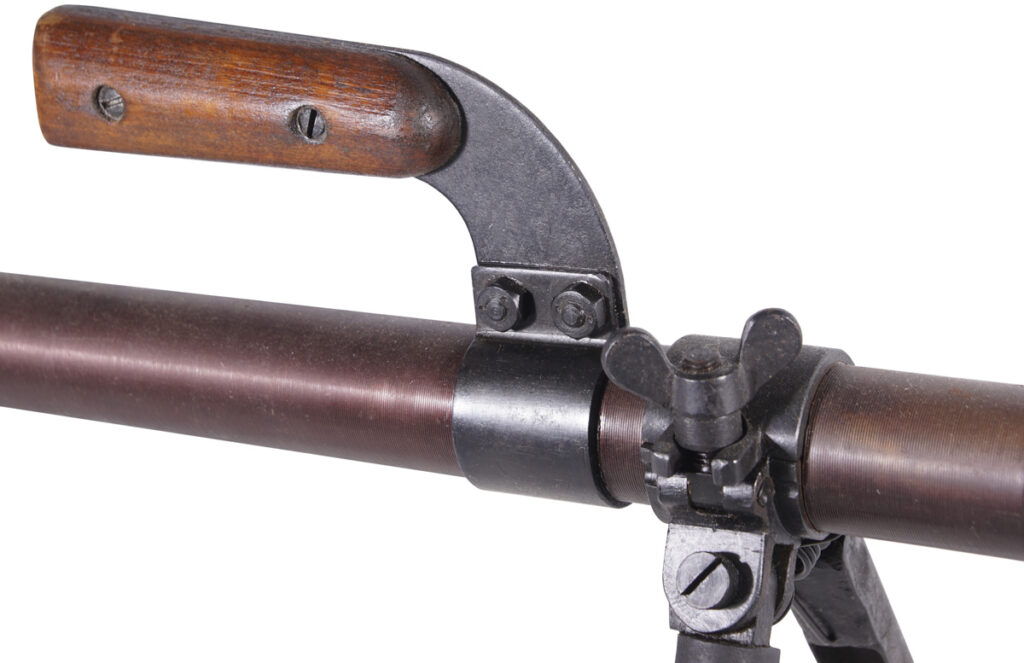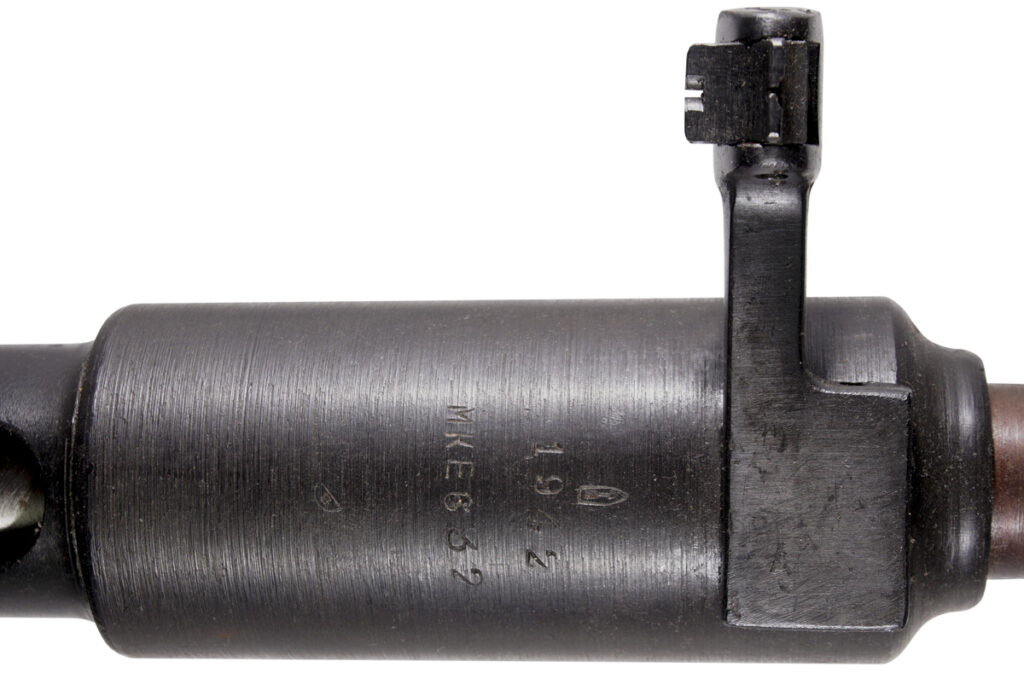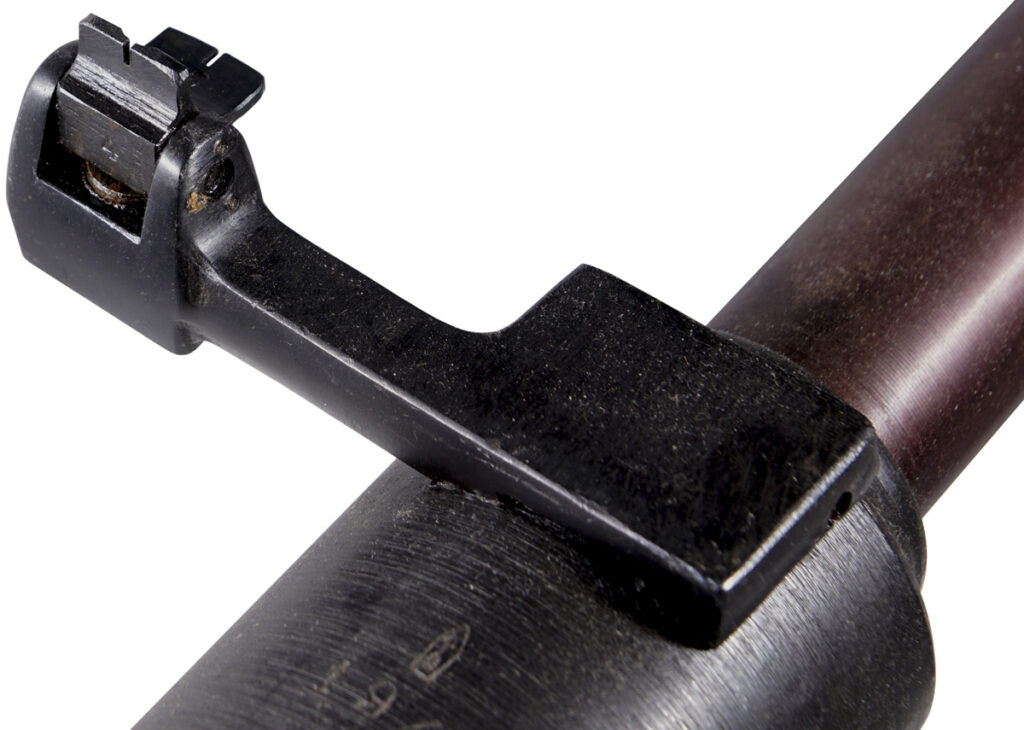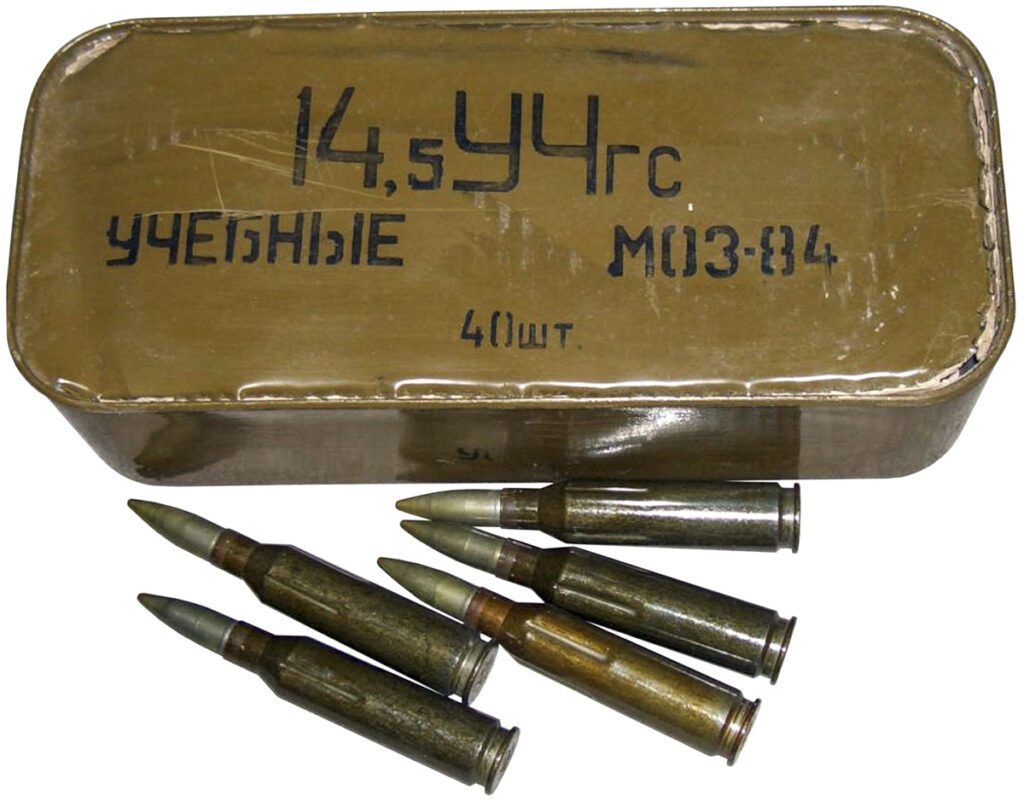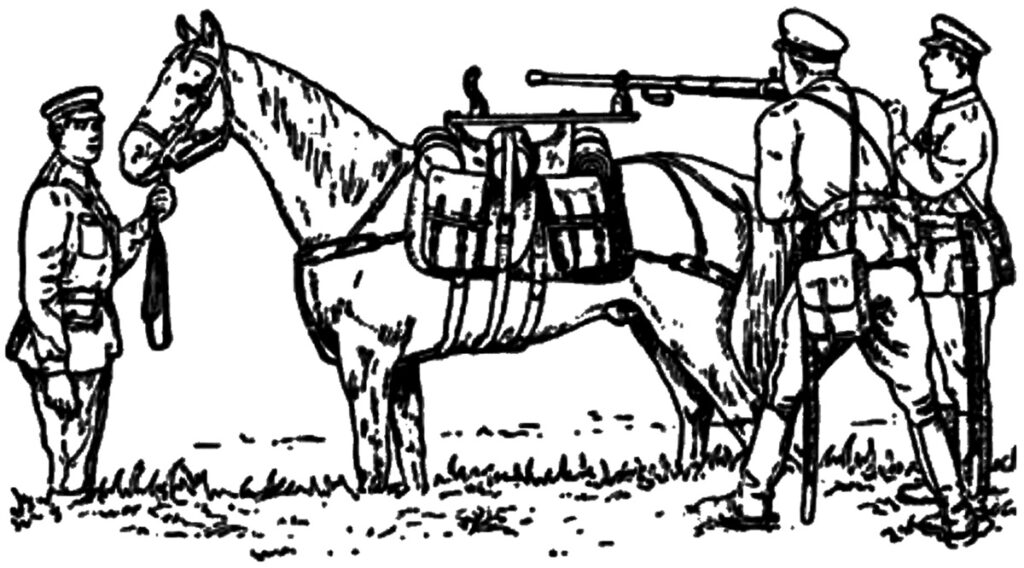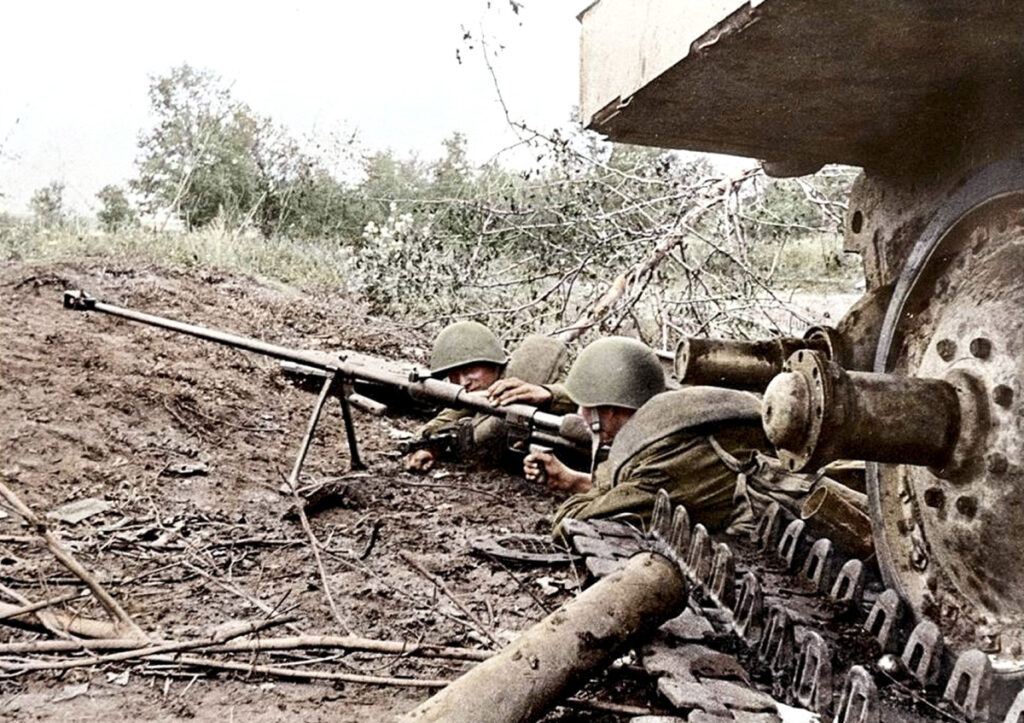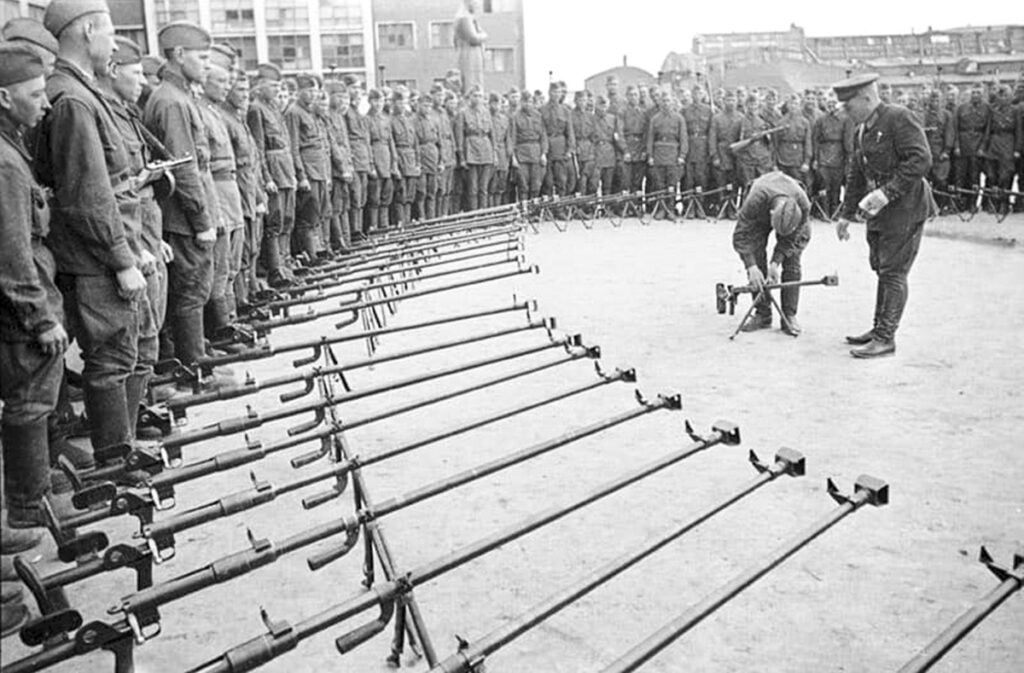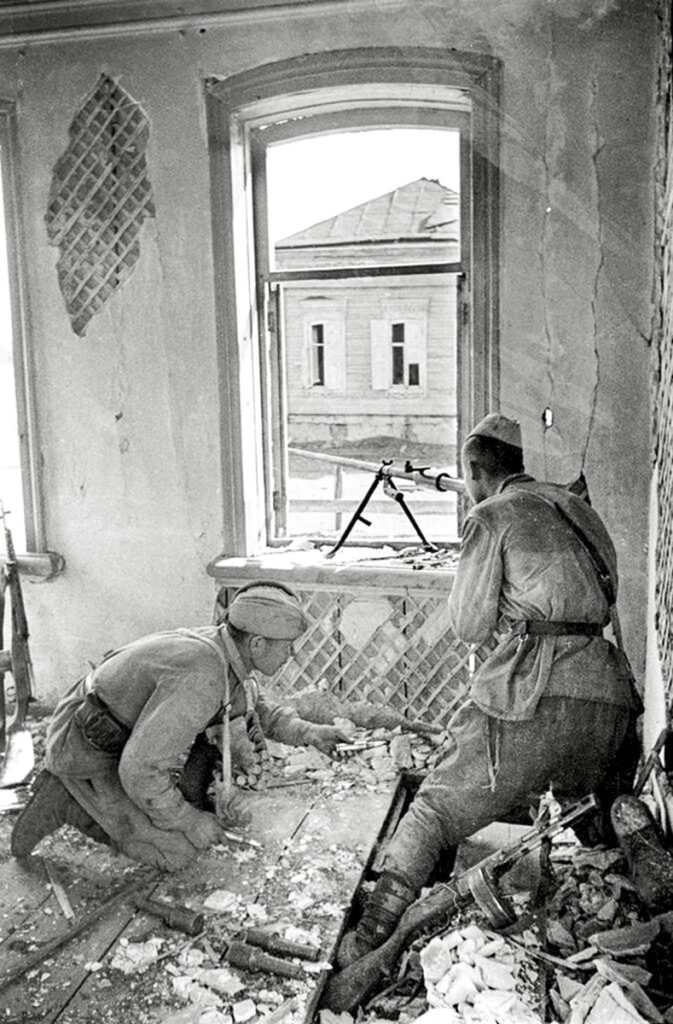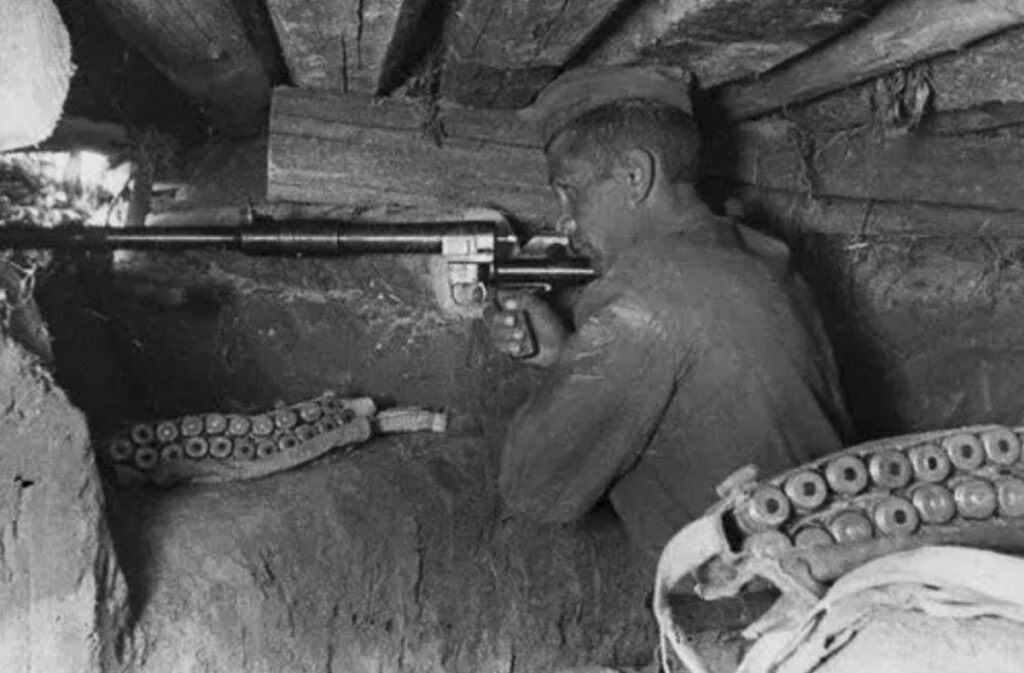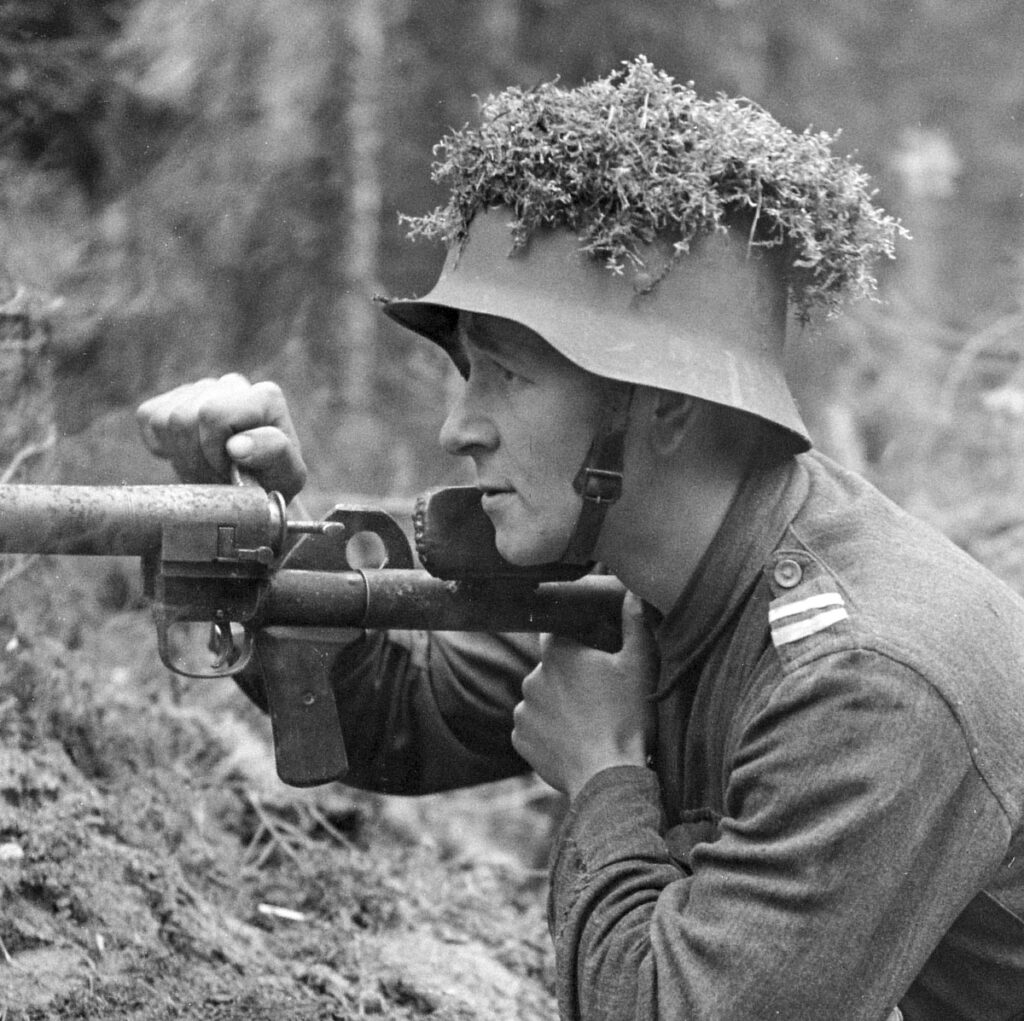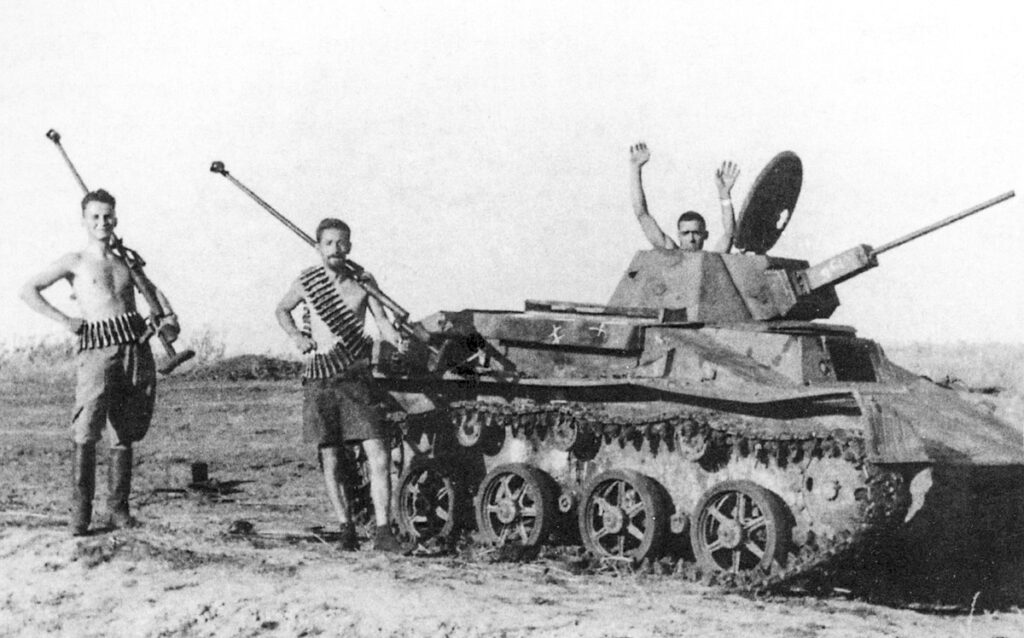By Michael Heidler –
When small-scale production of Sholokhov’s anti-tank rifle started in Moscow, plans for a more powerful weapon in a larger caliber also began at the same time.
| This is the second in a three-part post on the subject of Russian ani-tank rifles. See part one here. |
In July 1941, the USSR State Defense Committee (Gosudarstvennyj Komitet Oborony / GKO) announced a development program for a new 14.5mm caliber anti-tank rifle. The committee had been established shortly after the outbreak of the war to organize the country’s defense against the German attack.

Vassily Alexeyevich Degtyarov and Sergei Gavrilovich Simonov, two respected weapons designers, were commissioned to carry out the program. They were to develop two different types of anti-tank rifles in 14.5×114mm caliber as quickly as possible. A simple model as a single-loader and a somewhat more elaborate model with semi-automatic function.
Operation
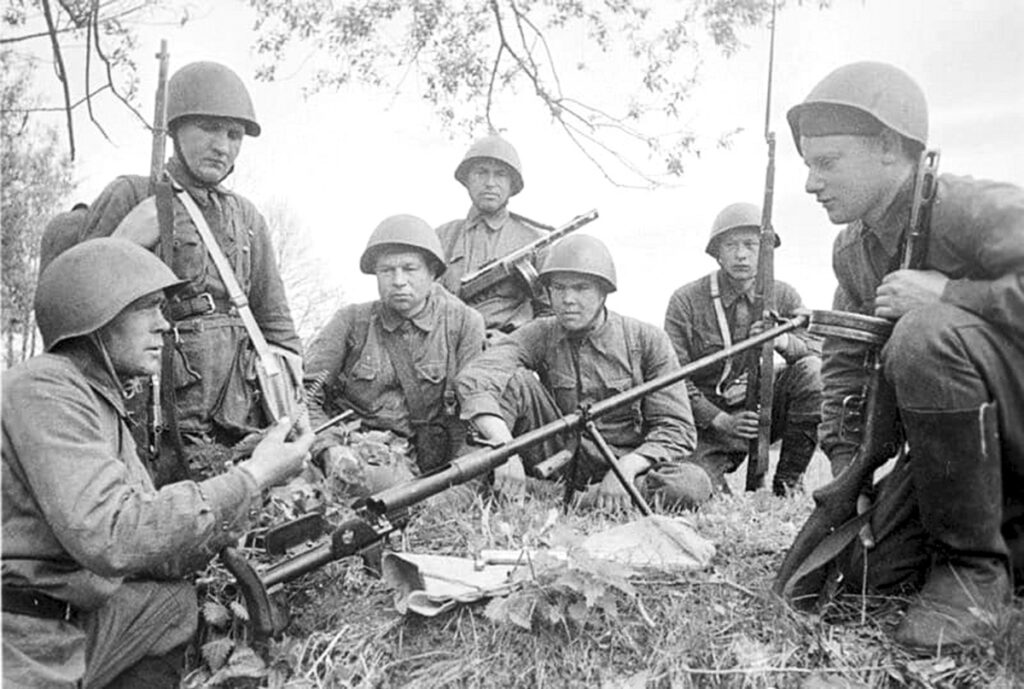
Degtyarov took care of the single-shot model. He created a bolt-action rifle with a cylindrical rotating bolt mechanism, which was even easier to handle than an ordinary rifle. This saved time in training the soldiers. A special feature of Degtjarjow’s weapon was the sliding barrel: After firing, the barrel slides back on the buttstock, absorbing about one third of the recoil force. During the return movement, the cocking handle hits a slanted metal plate on the right side of the stock, which pushes it upwards and thereby unlocks the bolt. The bolt then slides back even further, pulling the empty case out of the chamber and ejecting it downward. The barrel is pushed forward again by a strong spring. However, the bolt remains in its open position and the shooter closes it by hand after inserting a new cartridge. This cocks the firing pin, and the gun is ready to fire again.
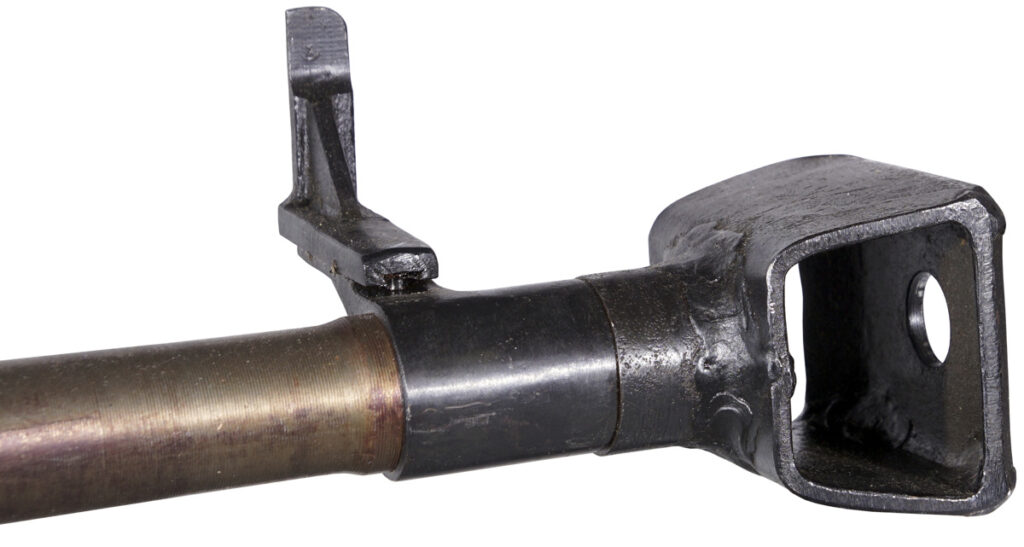
The massive muzzle brake proved to be very effective. Together with the padded shoulder rest and an equally padded cheek rest, these measures made shooting at least bearable for the shooter. The folding rear sight with two settings for 400 meters (437yd) and 600 meters (656yd) and the front sight are offset to the left.
The cartridge accelerated the projectiles to a muzzle velocity of more than 1,000m/s. At 300 meters (328yd), the lighter bullet (B-32 / 63 grams) penetrated 35mm (13.8in) of armor steel and the heavier bullet with a tungsten core (BS-41 / 64.4 grams) almost 40mm (15.7in). The strong muzzle flash, which resulted from the powder quantity of 30 grams, could be dangerous. All too easily, it betrayed the position of the shooter.
Production
In August 1941, the NIPSVO (Small Arms Research and Testing Organization) in Shchurovo received some specimens for testing. This went very well and thus the introduction of the Protiwotankovoje Ruschjo Degtjarjowa (Degtjarjow tank rifle), or PTRD for short, followed shortly thereafter. Serial production at the Instrument Factory No. 2 “K. O. Kirkish” in Kovrov started in October and the PTRD was already in front-line service in the battle for Moscow. However, the further course of the war was still uncertain and Kovrov was not far from Moscow. To avoid immediate danger from German troops, another production facility was established at Weapons Factory No. 74 in Izhevsk, about 1,200km east of Moscow. Production at Kovrov ended in November 1943 and was transferred to Weapons Factory No. 385 at Slatoust in the Urals. Towards the end of 1944, the Soviet Union then completely ceased production of anti-tank rifles.
Thanks to its simple design, the PTRD could be produced quickly in large quantities even by less skilled workers. No other anti-tank rifle was produced in larger numbers during World War II. The gigantic output reached 281,111 pieces:
1941: 17.688
1942: 184.800
1943: 62.350
1944: 16.273

The Wehrmacht captured large quantities of the PTRD along with ammunition during their advance. Designated as the Panzerbüchse 783(r), the weapons were usually immediately issued to the Wehrmacht’s own troops and used against their former owners.
Technical Data
Caliber: 14.5x114mm
Length: 202cm (79.5in)
Length of barrel: 135cm (53.1in)
Weight (empty): 16.3kg (36.0lb)
Magazine capacity: single loader



